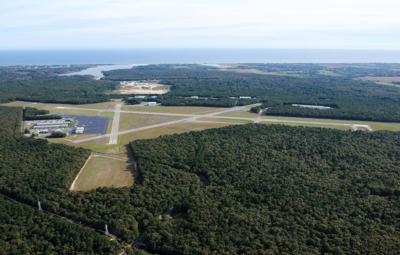Sets Important Precedent For Airports Nationwide
The U.S. Court of Appeals for the Second District has ruled that the Airport Noise and Capacity Act of 1990 (ANCA) continues to apply to New York’s East Hampton Airport (HTO) – making the town’s adoption of noise and access restrictions at HTO a violation of federal law.

That argument had been made to the court by NBAA, GAMA and other aviation interests.
The ruling, which sets an important precedent for airports nationwide, holds that ANCA continues to apply to HTO, despite the town’s stated intent to no longer accept federal Airport Improvement Program grants.
“NBAA has long advocated against unlawful and unreasonable restrictions being imposed at East Hampton Airport,” said NBAA President and CEO Ed Bolen. “We are gratified that the Second Circuit agrees that East Hampton remains bound by ANCA and related FAA policy and regulations.” ANCA requires airports to engage in a detailed study and obtain FAA approval for noise-based access restrictions before they can be implemented.
In April 2015, East Hampton adopted three restrictions for aircraft operations at HTO: A year-round general curfew (11 p.m.-7 a.m.), a year-round extended curfew for “noisy” aircraft (8 p.m.-9 a.m.) and a summertime one-trip-per-week limit for the aircraft deemed by the town to be noisy. In June 2015, a Federal District Court judge preliminarily upheld the town ordinances instituting the mandatory nighttime curfew, as well as the extended curfew on noisy aircraft, which have been enforced since July 2015. However, the court preliminarily enjoined the town from imposing a one-trip-a-week restriction.
In a briefing to the Second Circuit Court of Appeals in New York City, NBAA and other interested parties – including airport tenants and users – argued that all of the restrictions adopted by the town of East Hampton in April 2015 violate ANCA. The court heard oral arguments on the appeal in June 2016.
NBAA advises operators to continue complying with the existing curfews at HTO until the district court enters a preliminary injunction officially enjoining the curfews.

“The success of aviation – both general aviation and commercial aviation – depends on having a uniform and consistent set of rules,” said Bolen. “Congress specifically adopted ANCA to prevent access restrictions from being imposed on a piecemeal basis by airports across the country.”
NBAA has also filed an administrative complaint with the FAA, which separately challenges the town's compliance with its grant-based obligations, and questions whether East Hampton has inappropriately used airport revenues to pay for its legal expenses in defending the restrictions it has enacted. An FAA decision on the complaint is anticipated later this year.
“Although NBAA is greatly encouraged by the Second Circuit’s decision, we will continue to remain vigilant and will oppose efforts that seek to limit the utility of airports like HTO and the overall viability of the national airspace system,” said Bolen.
“Today’s decision by the Second Circuit is an important recognition that East Hampton’s laws are preempted by ANCA, which applies to all public airports,” GAMA president and CEO Pete Bunce said. “In our brief, we argued that by violating the ANCA requirements, the town’s restrictions undermine the development and use of quieter aircraft technologies that help to reduce noise nationally. We are glad the court agreed by upholding a national noise policy. Given the strong reasoning of the decision, we hope other courts will follow the important precedent set today.”
(Source: NBAA and GAMA news releases. Images from file)
 ANN's Daily Aero-Term (12.08.25): Decision Altitude (DA)
ANN's Daily Aero-Term (12.08.25): Decision Altitude (DA) ANN's Daily Aero-Linx (12.08.25)
ANN's Daily Aero-Linx (12.08.25) NTSB Final Report: Piper PA-31T3
NTSB Final Report: Piper PA-31T3 Aero-News: Quote of the Day (12.08.25)
Aero-News: Quote of the Day (12.08.25) Airborne-Flight Training 12.04.25: Ldg Fee Danger, Av Mental Health, PC-7 MKX
Airborne-Flight Training 12.04.25: Ldg Fee Danger, Av Mental Health, PC-7 MKX




